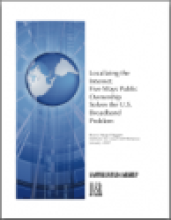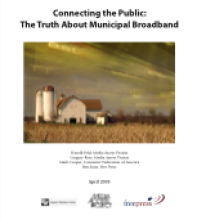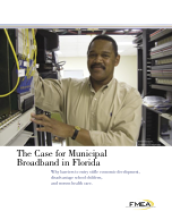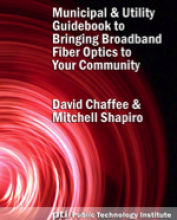By
A new report by the Institute for Local Self-Reliance argues that a publicly owned information infrastructure is the key to healthy competition, universal access, and non-discriminatory networks.
“Localizing the Internet: Five Ways Public Ownership Solves the U.S. Broadband Problem” notes that high speed broadband is becoming ever more widespread. But, it argues, the way in which that broadband is introduced may be as important as whether it is introduced.
Many telecommunications companies are offering to build a citywide wireless or even wired network at little or no upfront cost to the city. That arrangement is especially attractive to local elected officials who fear that government lacks the expertise to manage a high tech network and who worry about the possible impact on their budget. “This is an excellent time to remember to look that gift horse in the mouth,” maintains Becca Vargo Daggett, the report’s author and the director of the Institute’s Telecommunication as Commons Project.
“Even deals framed as coming at no cost to the city require the public sector to enter into extended contracts to pay millions for their own services over the new privately owned network. Cities owe it to themselves and their citizens to carefully evaluate the costs and benefits of public ownership.”
Ms. Vargo Daggett also notes that cities that own infrastructure like roads and water pipelines should not fear owning the physical information network. “Concerns about obsolescence are overstated. Fiber optics is the gold standard, with essentially unlimited capacity and a lifespan measured in decades. Wireless technology is rapidly evolving, but its price is low and the payback period is short.”
Moreover, unlike investments in traditional infrastructure, an investment in information networks can generate a significant return. “The investment will not only pay for itself, but can generate revenue that can pay for other important municipal services.”










